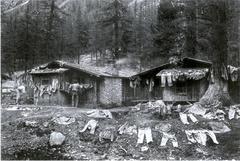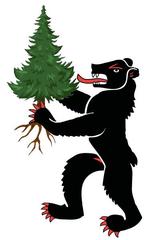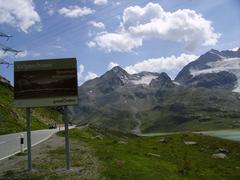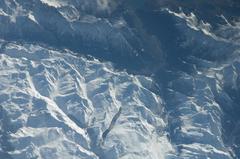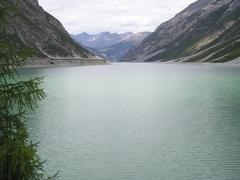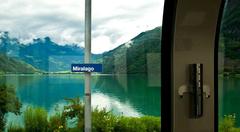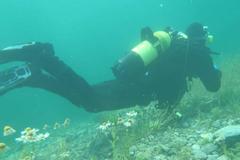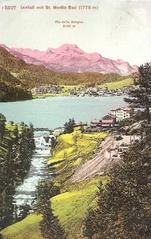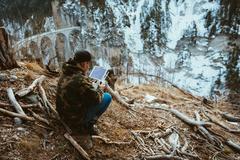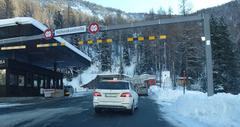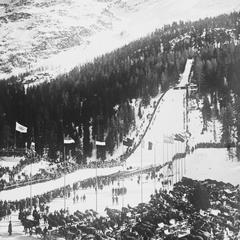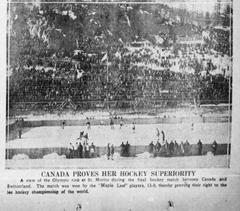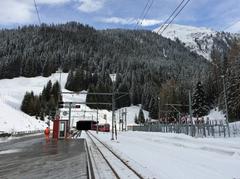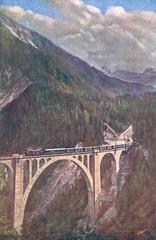Swiss National Park Visiting Hours, Tickets, and Travel Guide
Date: 14/06/2025
Introduction
Nestled in the stunning alpine landscape of the Canton of Graubünden, the Swiss National Park (SNP) is Switzerland’s oldest and most strictly protected nature reserve. Founded on August 1, 1914—Switzerland’s National Day—the park covers roughly 170 square kilometers, making it the country’s largest protected area and a vital part of European natural heritage. As an IUCN Category Ia Strict Nature Reserve, SNP is celebrated for its untouched wilderness, ecological research, and pioneering conservation philosophy.
This guide provides detailed information on visiting hours, ticketing, accessibility, and travel tips, as well as insights into the park’s ecological significance and visitor experience. Whether you’re a casual traveler or a nature enthusiast, you’ll find everything needed to plan a memorable and responsible visit (Swiss National Park Official Site, IUCN Green List).
Table of Contents
- Visiting Hours, Tickets, and Travel Tips
- History & International Significance
- Visitor Experience and Regulations
- Frequently Asked Questions (FAQ)
- Summary and Call to Action
- References
Visiting Hours, Tickets, and Travel Tips
Visiting Hours and Best Times to Visit
The Swiss National Park is accessible year-round, but the main hiking season runs from late May to mid-October, depending on snow conditions. The National Park Centre in Zernez—the park’s primary visitor hub—is open daily from 9:00 AM to 5:00 PM, with extended hours in summer. Trails are open during daylight hours, generally from 8:00 AM to 7:00 PM (Swiss National Park Visiting Hours, Tickets, and Travel Guide).
Best time to visit:
- Late spring through early autumn (May–October): All hiking trails are open, wildlife is most active, and the flora is in full bloom.
- Winter: Offers snowshoeing and cross-country skiing opportunities, but many trails are closed due to snow and safety concerns.
Ticket Prices and Booking
- Park entry: Free of charge for all visitors.
- Guided tours and events: Some require advance booking and a fee. Tickets can be purchased online or at the National Park Centre in Zernez.
- No ticket required for general access or hiking.
Accessibility and Facilities
- Transport: The park is easily reached by public transport (train and bus to Zernez) and by car, with parking in Zernez. Car access within the park is not permitted.
- Facilities: The National Park Centre offers multilingual exhibitions, restrooms, a café, educational programs, and up-to-date trail information.
- Trails: Well-marked routes for all fitness levels. Off-trail hiking is strictly forbidden to protect fragile habitats.
- Accommodation: No camping is allowed within the park, but the Chamanna Cluozza hut and Hotel Il Fuorn offer rustic overnight options. Nearby towns provide a range of hotels and guesthouses.
- Accessibility: Some trails and the National Park Centre are accessible for visitors with reduced mobility; inquire in advance for details.
Guided Tours and Events
- Expert-led hikes: Available in multiple languages, focusing on the park’s ecology, geology, and wildlife.
- Special events: Include wildlife observation weekends, family workshops, and the NATURAMA lecture series. Check the official calendar for schedules.
- Educational activities: Champlönch children’s trail and the interactive iWebpark app make nature discovery engaging for families.
Travel Tips and Nearby Attractions
- Where to stay: Zernez and other Graubünden villages offer accommodation and dining.
- Nearby attractions:
- Regional Nature Park Biosfera Val Müstair (UNESCO Biosphere Reserve)
- Stelvio National Park (Italy)
- Historic towns like Scuol and S-chanf, and the scenic Engadin valley
- Preparation: Bring all necessary supplies, as there are no shops or restaurants inside the park. Always check trail and weather conditions before your visit.
History & International Significance
Founding and Conservation Philosophy
The SNP was created in response to early 20th-century concerns over industrialization and habitat loss. Its establishment marked a milestone in European conservation efforts, setting a precedent for strict nature protection. The park’s philosophy is one of “total protection,” emphasizing minimal human interference and serving as a living laboratory for natural processes (Environment & Society Portal).
Expansion and Recognition
- Area: 170.3 km², Switzerland’s largest protected area.
- Designations:
- Recognized as a UNESCO Biosphere Reserve in 1979
- Awarded “Park of National Importance” status in 2021
- Legal status: IUCN Category Ia (Strict Nature Reserve), with robust regulations enforced by rangers.
Biodiversity and Scientific Research
- Species: Home to over 5,000 animal species, including Alpine ibex, chamois, marmots, red deer, golden eagles, and bearded vultures (IUCN Green List, nationalparksassociation.org).
- Research: SNP functions as an “open-air laboratory,” with more than 2,000 scientific publications since 1914. The FOK-SNP Research Commission coordinates wide-ranging ecological studies (FOK-SNP).
- Conservation achievements: Successful reintroduction of ibex; preservation of rare alpine habitats.
International Influence
As the first national park in the Alps and Central Europe, SNP has inspired the creation of similar reserves, such as Gran Paradiso and Stelvio National Parks in Italy. Its integration into the UNESCO Biosphere Reserve system underscores its global ecological value (eupedia.com).
Visitor Experience and Regulations
Hiking and Nature Experience
- 100 km of marked trails: From gentle valley walks to challenging alpine routes.
- Wildlife observation: Maintain a safe distance, move quietly, and never feed animals.
- Family-friendly: Interactive children’s trails and educational exhibits.
Park Regulations
To preserve the park’s pristine state, strict rules apply:
- Stay on marked trails: Off-trail hiking is prohibited.
- No pets: Dogs are not permitted to prevent wildlife disturbance.
- No camping, fires, or littering: Except at Chamanna Cluozza hut; visitors must carry out all waste.
- No cycling or motorized vehicles on trails.
- No collecting plants, rocks, or disturbing wildlife.
- Violators may be fined.
Safety Tips
- Weather: Alpine conditions can change rapidly; always check forecasts.
- Equipment: Wear sturdy hiking boots and bring appropriate gear.
- Emergency: Save the Swiss air rescue number (Rega: 1414).
- Inform others: Let someone know your itinerary.
Frequently Asked Questions (FAQ)
Q: When is the best time to visit the Swiss National Park?
A: Late spring to early autumn (May–October) offers the best trail access and wildlife viewing.
Q: Is park entry free?
A: Yes, entry is free. Guided tours and special events may require tickets.
Q: Are dogs allowed?
A: No, pets are not permitted anywhere in the park.
Q: Can I camp or light fires?
A: Camping and fires are strictly prohibited except at the designated Chamanna Cluozza hut.
Q: Is the park accessible for people with disabilities?
A: Some trails and the Visitor Centre are accessible; check in advance for details.
Q: How do I get there using public transport?
A: Take a train or bus to Zernez, which serves as the main gateway to the park.
Q: Are there places to eat inside the park?
A: No. Bring your own food and water; dining options are available in Zernez and nearby towns.
Summary and Call to Action
The Swiss National Park exemplifies the highest standards of Alpine conservation, blending over a century of strict protection with robust scientific research and enriching visitor experiences. Its status as Switzerland’s oldest national park and a UNESCO Biosphere Reserve underscores its global importance and exemplary stewardship. By respecting the park’s regulations and embracing responsible tourism, visitors play a vital role in preserving this natural treasure for future generations (Swiss National Park Conservation Guide, IUCN Green List).
Make the most of your visit by:
- Booking a guided tour for expert insights.
- Exploring interactive resources like the Audiala and iWebpark apps.
- Following the park on social media for updates and stunning alpine photography.
Plan your visit today and experience the awe-inspiring beauty and ecological significance of the Swiss National Park!
References
- Swiss National Park Official Site, 2025, Swiss National Park (https://www.nationalpark.ch)
- IUCN Green List, 2025, Swiss National Park (https://iucngreenlist.org/sites/Swiss-National-Park/)
- Swiss National Park Visiting Hours, Tickets, and Travel Guide, 2025, National Park Centre Zernez (https://www.nationalpark.ch/en/visit/)
- FOK-SNP Research Commission, 2025, Swiss National Park Scientific Research (https://fok-snp.scnat.ch/)
- Swiss National Park Visitor Experience, 2025, MySwitzerland (https://www.myswitzerland.com/en-us/destinations/swiss-national-park/)
- Generis Online, 2025, Conservation Policies in Switzerland (https://generisonline.com/conservation-policies-in-switzerland-protecting-nature-and-biodiversity/)
- National Parks Association, 2025, Switzerland National Parks (https://nationalparksassociation.org/country/switzerland-national-parks/)
